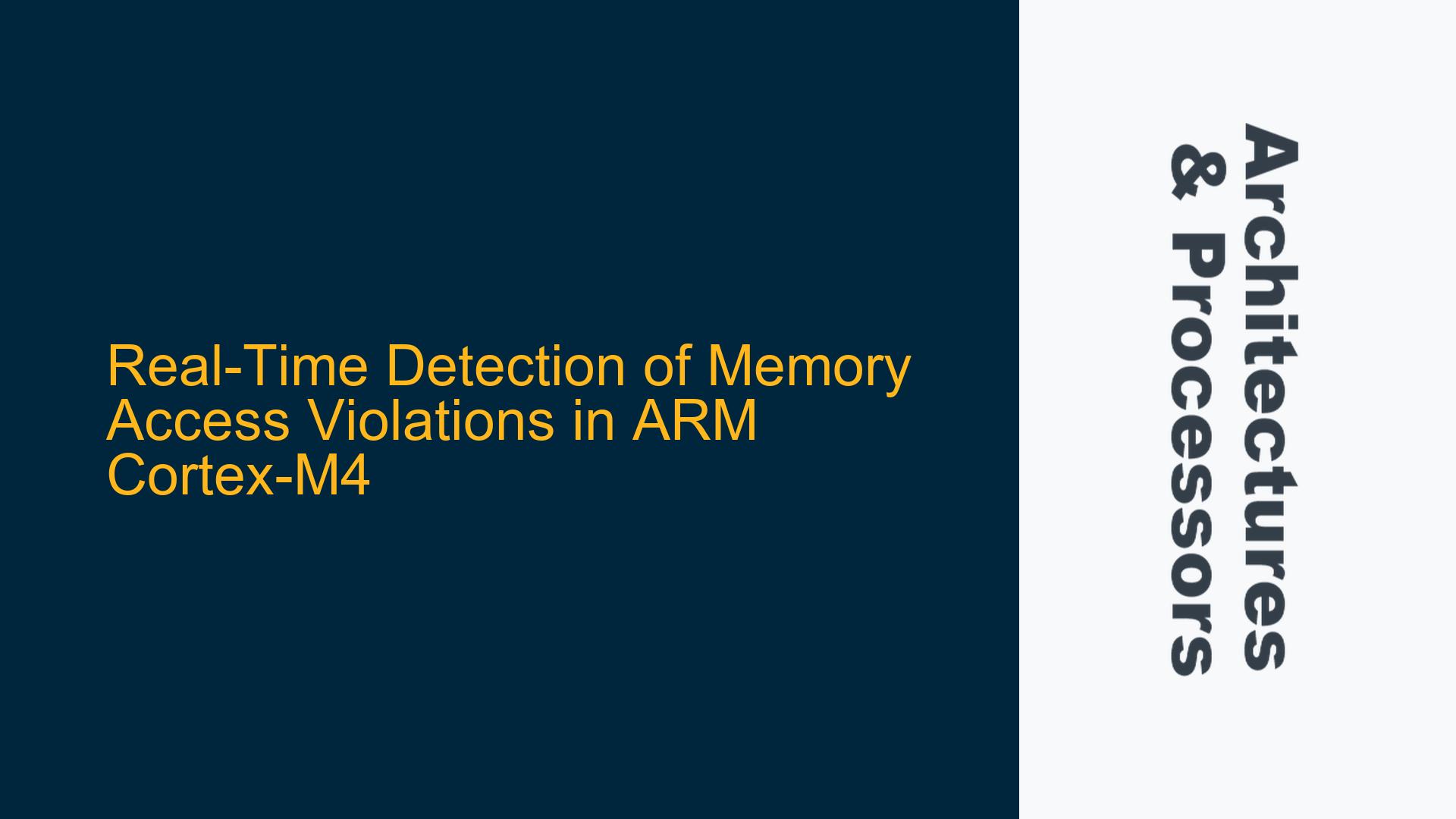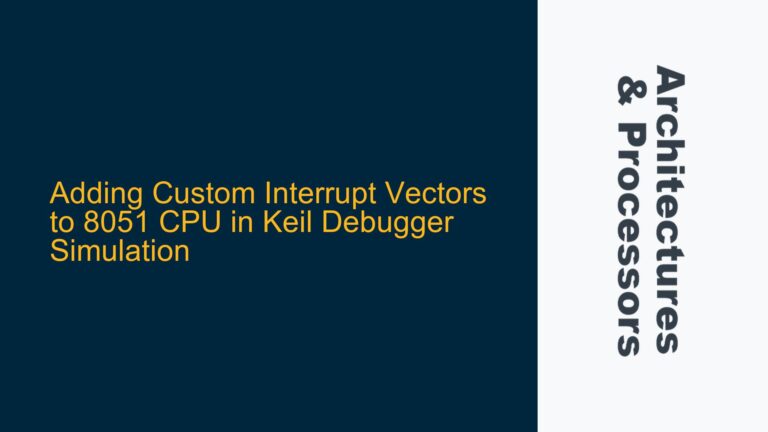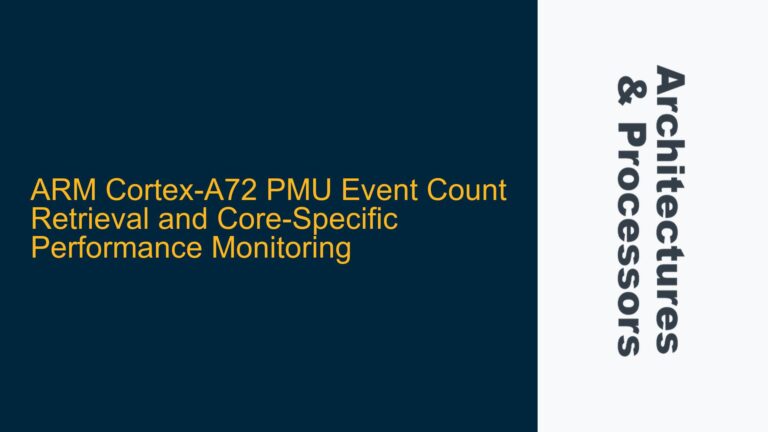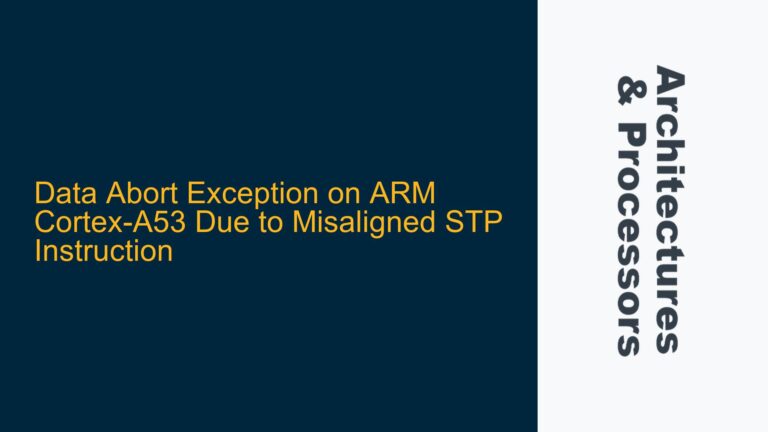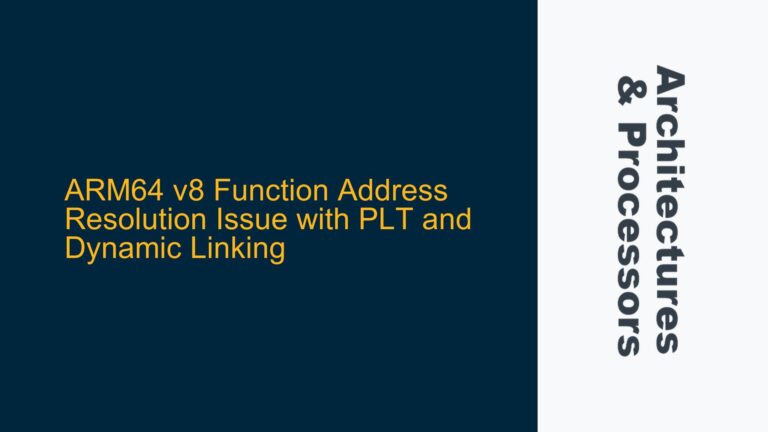ARM Cortex-M4 Memory Access Violation Detection Challenges
In embedded systems, particularly those utilizing ARM Cortex-M4 processors, detecting memory access violations in real-time is a critical yet challenging task. Memory access violations occur when a program attempts to read or write beyond the bounds of an allocated memory block, leading to undefined behavior, data corruption, or system crashes. The Cortex-M4, while efficient and powerful, lacks built-in hardware mechanisms to detect such violations in real-time across large memory regions like the heap, which can span tens of kilobytes or more.
The primary challenge lies in the limitations of the Cortex-M4’s Data Watchpoint and Trace (DWT) unit. The DWT unit can monitor memory access within a 32-byte range using its comparators and mask registers. However, this range is insufficient for monitoring large heap regions, which are typically much larger. Additionally, the Cortex-M4 does not provide hardware support for memory protection units (MPUs) that can dynamically adjust to heap allocations, making it difficult to enforce memory boundaries in real-time.
Another layer of complexity arises from the dynamic nature of heap memory. Unlike stack memory, which has a predictable and linear growth pattern, heap memory allocations are fragmented and can vary significantly in size and location. This unpredictability makes it difficult to implement real-time monitoring solutions without incurring significant performance overhead or requiring extensive modifications to the memory management system.
DWT Limitations and Heap Memory Fragmentation Constraints
The Data Watchpoint and Trace (DWT) unit in the Cortex-M4 is designed for debugging and profiling purposes, offering features like PC sampling, exception tracing, and memory access monitoring. However, its memory access monitoring capabilities are limited by the number of comparators and the address range they can cover. Each comparator can monitor a 32-byte range, which is insufficient for large heap regions. For example, a heap size of 50KB would require over 1,500 comparators to cover the entire region, far exceeding the Cortex-M4’s hardware capabilities.
Heap memory fragmentation further complicates real-time detection. Fragmentation occurs when memory is allocated and freed in a non-contiguous manner, leading to gaps between allocated blocks. These gaps can vary in size and location, making it difficult to predict where a memory access violation might occur. Traditional methods like periodic heap scans can detect violations after the fact but fail to provide real-time detection, which is crucial for debugging and system reliability.
The use of guard patterns, such as placing a known "virgin" pattern before and after each allocated memory block, can help detect out-of-bounds accesses during periodic scans. However, this approach does not provide real-time detection and relies on the assumption that the guard patterns remain intact until the next scan. In high-performance or safety-critical systems, this delay is unacceptable, as it allows corrupted data to propagate and potentially cause system failures.
Implementing Guard Patterns and Custom Memory Management for Real-Time Detection
To achieve real-time detection of memory access violations in the Cortex-M4, a combination of software and hardware techniques must be employed. One effective approach is to implement custom memory management functions that include guard patterns and runtime checks. By redefining malloc and free functions, developers can embed guard patterns around each allocated memory block and include runtime checks to verify the integrity of these patterns.
For example, the custom malloc function can allocate additional memory to store guard patterns before and after the requested memory block. The custom free function can then check these patterns to ensure they have not been modified. If a guard pattern is found to be corrupted, the system can immediately halt execution and log the violation. While this approach adds some overhead to memory allocation and deallocation, it provides a high level of confidence in detecting out-of-bounds accesses.
Another technique involves leveraging the Cortex-M4’s MPU to enforce memory boundaries dynamically. Although the MPU is typically used for static memory regions, it can be reconfigured at runtime to protect specific heap allocations. By dividing the heap into smaller, protected regions and updating the MPU configuration as memory is allocated and freed, developers can enforce memory boundaries in real-time. However, this approach requires careful management of the MPU regions and may not be feasible for systems with highly dynamic memory usage.
For systems where hardware-based solutions are insufficient, software-based techniques like instrumentation can be used. Instrumentation involves inserting additional code into the application to monitor memory accesses. For example, developers can use compiler features or custom tools to insert checks before and after each memory access operation. These checks can verify that the accessed memory falls within the bounds of the allocated block and trigger an immediate response if a violation is detected. While instrumentation can introduce significant overhead, it provides a flexible and powerful way to enforce memory safety.
In conclusion, real-time detection of memory access violations in ARM Cortex-M4 systems requires a combination of hardware and software techniques. By leveraging custom memory management functions, guard patterns, and runtime checks, developers can achieve a high level of confidence in detecting and preventing out-of-bounds accesses. While the Cortex-M4’s hardware limitations present challenges, creative solutions and careful system design can overcome these obstacles and ensure robust and reliable system operation.
